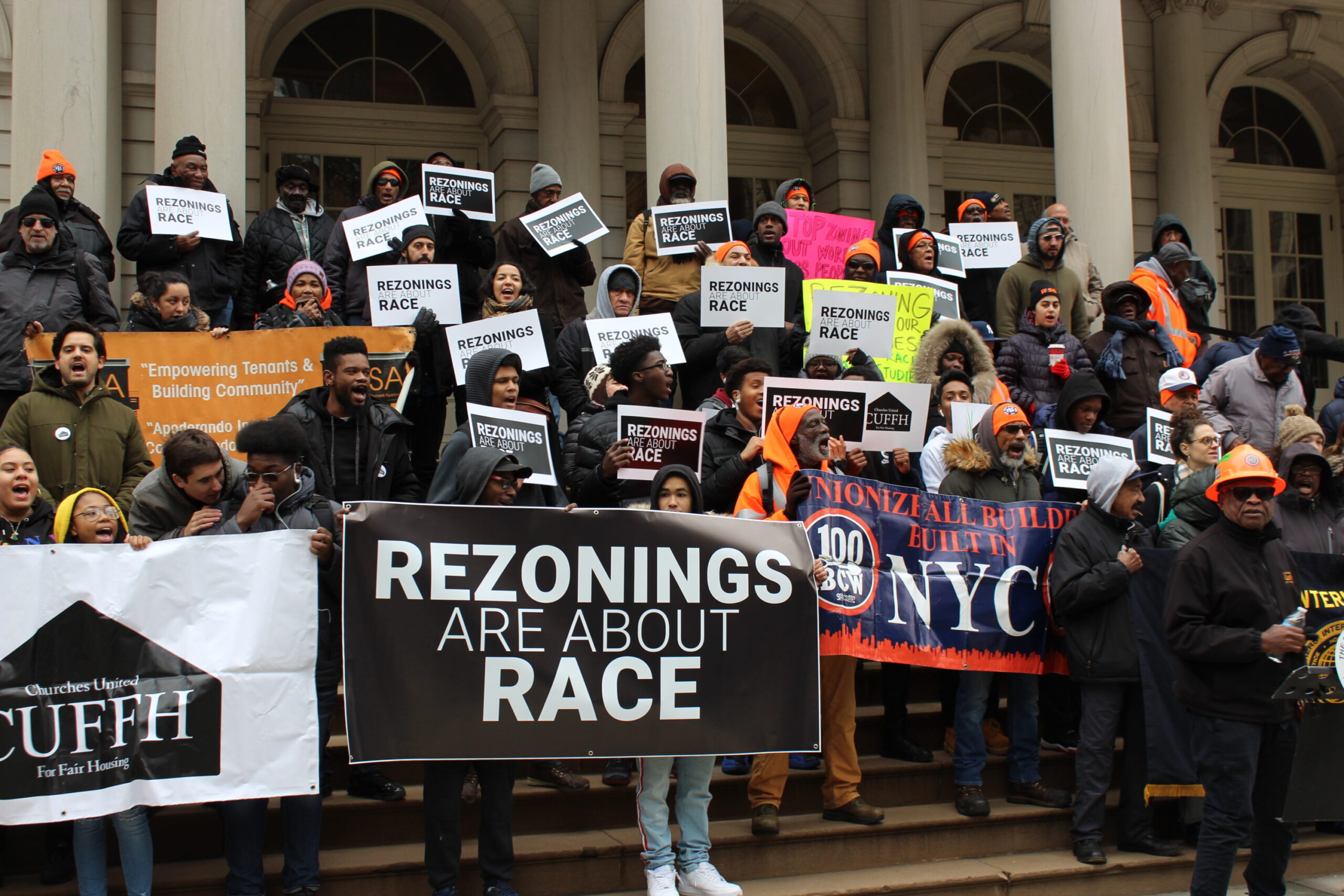In 2021, New York City took a landmark step in land use policy by requiring racial impact studies for certain rezoning and development applications. These reports, the result of years of advocacy by housing justice groups and led by the Racial Impact Study Coalition (RISC), aim to bring greater transparency to the racial and economic consequences of how land is developed and used. But nearly four years later, a new analysis from the Pratt Center for Community Development finds that these tools are not being used to their full potential.
In a recent op-ed for City Limits, Eve Baron, associate professor in Urban and Community Planning, and Tara Duvivier, senior planner at the Pratt Center, share findings from the Pratt Center’s new report, Making the Most Out of Racial Equity Reports. Their research involved reviewing more than 50 Racial Equity Reports (RERs) and conducting interviews with community board members and elected officials and their staff across the city.
The report found that a lack of awareness, training, and accountability is limiting the use and undermining the potential impact of these tools.
Many community boards, which play a central role in the city’s public review process for rezonings, reported never receiving training on RERs and some had never heard of them at all. Developers often fail to present the reports during public meetings and many residents find the accompanying data tools difficult to interpret without proper support. As a result, the tools are not informing the public conversations they were designed to support.
This underuse comes at a time when opponents of the policy are using the gap in implementation to attack the tools themselves.
“If we’re serious about equitable growth, we should be strengthening our anti-displacement tools, not sidelining them from the conversation,” Baron and Duvivier write. “That means making sure these tools actually work for the people they were meant to serve.”
“It starts with training community board members—something the city still hasn’t done—on how to use RERs. It means improving the existing data tools to make it easier for residents to navigate. And it requires holding developers accountable for presenting their RERs as part of public review for discussion, not just submitting them as a technicality.”
Much of the Pratt Center’s recent work deals with housing justice, from an examination of local house-flipping trends and advocacy for safer basement apartments to a program that retrofits homes in Brooklyn with power-saving and sustainable amenities.
As leaders in community-centered planning, Baron and Duvivier highlight an inflection point in their latest op-ed: New York City has created the tools to support more equitable land use, but must now commit the resources, training, and visibility to ensure they are used as intended.
